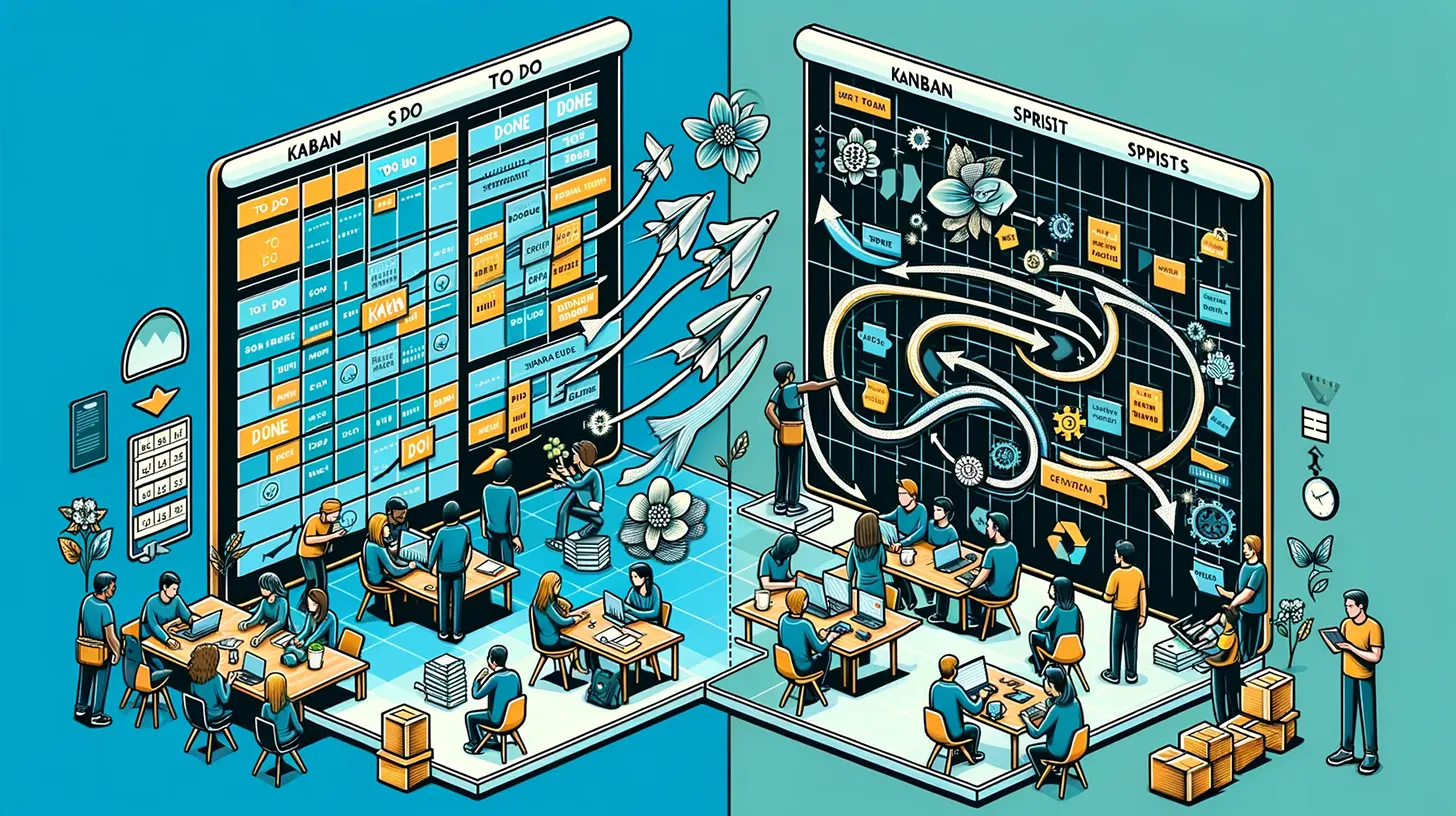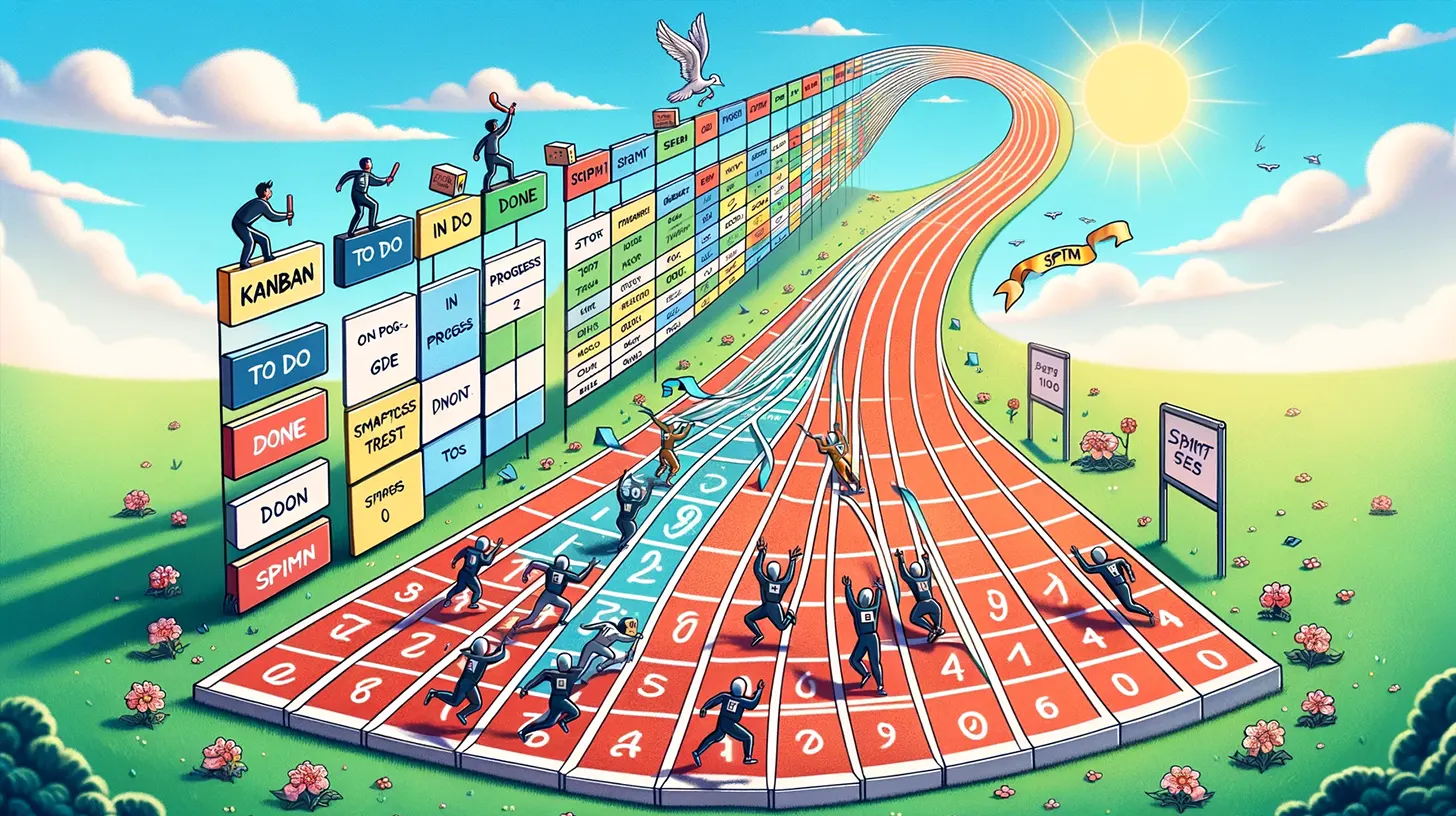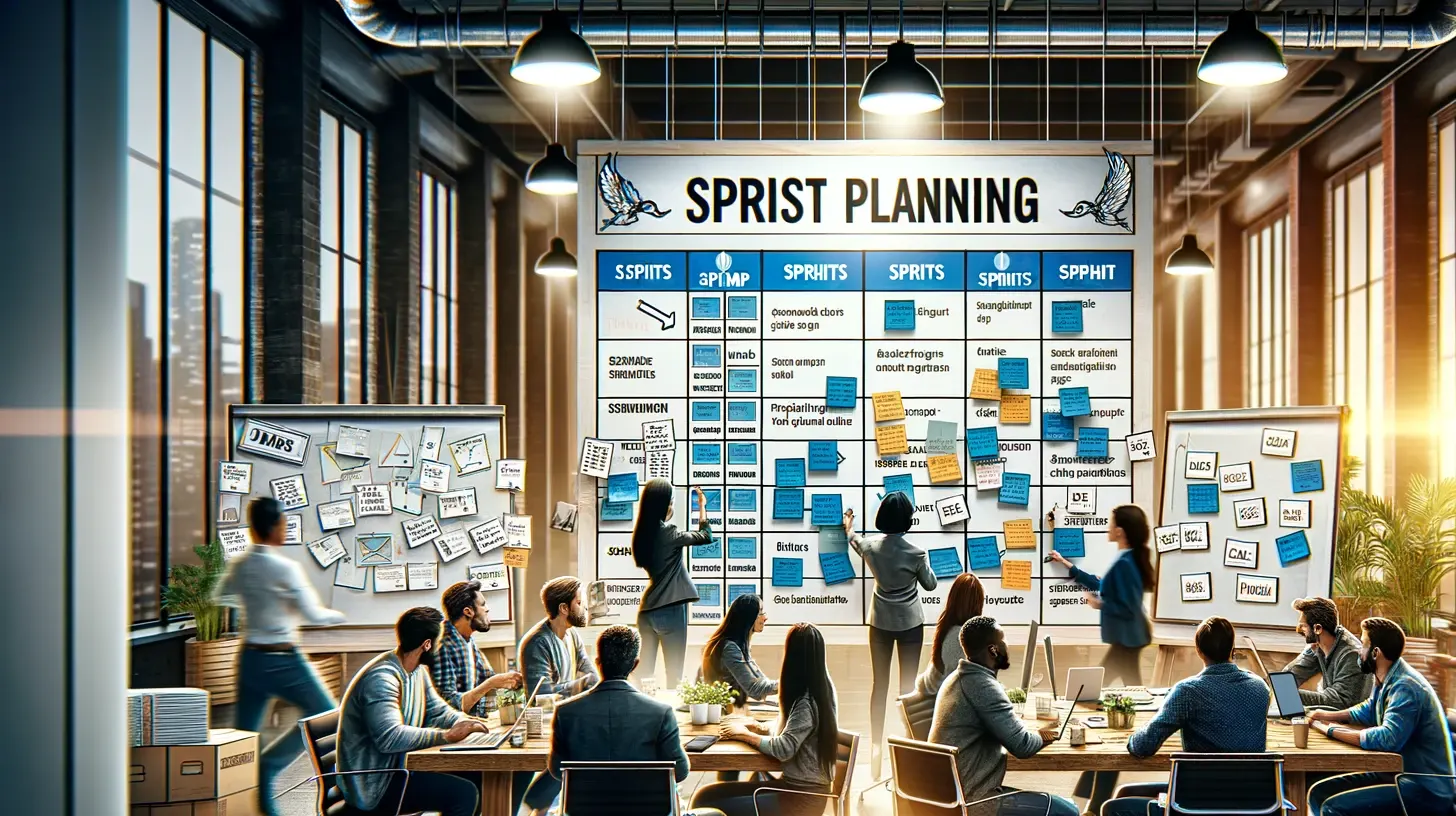Interesting statistics
What is kanban?
Kanban is an agile project management methodology that aims to create a continuous workflow. Instead of breaking projects down into sprints, kanban boards visualize each task as a card that moves through various stages from start to finish. The goal is to identify bottlenecks in the process and reduce wait times between steps.

Kanban boards use work-in-progress (WIP) limits to prevent overloading team members. New work can only start when capacity becomes available. This promotes a sustainable, steady pace and high quality.
What are sprints?
Sprints are short, repeated cycles in agile frameworks like Scrum. Each sprint has a defined duration (often 1-4 weeks) when the Scrum team works to complete specific product backlog items and meet the sprint goal. At the end of the sprint, work should be shipped to stakeholders to gather feedback.
Sprints provide opportunities to regularly inspect progress, re-plan work, and adapt to change. They create measurable increments that help forecast release dates. Daily standups, sprint planning sessions, reviews, and retrospectives also encourage high collaboration.
What are the main differences?
Cadence: Kanban is continuous flow, while sprints have short fixed lengths
Work items: Kanban uses card-based visual signals, and sprints focus on backlog items
Flexibility: Kanban adapts as items move, sprints re-plan at the start of each cycle
Commitment: Sprints require commitment to sprint goals, kanban is change-driven
Process: Kanban discovers inefficiencies, sprints optimize within timeboxes
Metrics: Cycle time reveals Kanban process issues, velocity tracks sprint progress
Which one is better for software teams?
It depends on the type of project and team preferences. Kanban offers tremendous flexibility for ever-changing priorities. Smooth flows also suit teams collaborating across companies. However, some teams thrive on the structure of regular sprints and consensus-driven commitments. Strict deadlines can encourage focus on complex projects.

In practice, many teams blend both frameworks - using Kanban’s WIP limits and process analysis even while timing releases around agile sprints. The best approach involves continuous experimentation rather than dogmatic adherence to a model. Culture, norms, and evolving constraints determine what works for a given team at a point in time.
When should teams choose kanban over sprints?
Kanban works well when priorities frequently change, teams must respond quickly to feedback, or there is uncertainty around scoping work. The flexibility helps deliver value steadily without rigid time constraints. Services and maintenance projects often use kanban since new items arise continuously rather than planning long-term roadmaps.

How to choose between Kanban and Sprint?
Consider the project's requirements, team structure, and task variability. Kanban suits ongoing tasks, while Sprints are ideal for projects with clear, periodic goals.
When are sprints more appropriate?
For teams new to agile, sprints provide structure through roles, meetings, and artifacts to build capabilities. Timeboxed sprints also suit complex projects that benefit from dividing massive goals into actionable increments planned for 6-12 months. The cadence facilitates coordination across large initiatives. Iterative testing and feedback are also easier to organize per sprint.
Is Kanban more adaptable than Sprint-based methods?
Kanban allows for immediate adjustments in workflow, providing greater flexibility. Sprint methods offer planned intervals for review and adaptation.
Can teams combine both frameworks?

Absolutely. Many teams run 1-2 week “service sprints” to chunk maintenance items while larger product work is managed on a feature-driven kanban board. Or kanban is used to visualize flow during 2-4 week sprints focused on backlog completion. Adjacent processes like releases or escalations may also be mapped to boards with WIP limits even if the core sprint routine remains unchanged.
Should service teams eventually transition from sprints to kanban?
Not necessarily. Regular sprints provide touchpoints important for some teams even when running predominantly maintenance work. If existing processes work well, teams should be careful not to change frameworks purely out of dogma. However, analyzing cycle time, work-in-progress limits and other kanban metrics can uncover improvement areas for processes around any agile approach. Mixing and matching techniques allow tailoring project management to current constraints.
How is change managed using both approaches?

Kanban enables real-time adjustments in priorities, while Sprints incorporate changes through planned meetings and reviews.
How does kanban training or certification differ from scrum or agile training?
Kanban methodology has advanced certification paths similar to scrum credentials. However hands-on coaching is often more effective than formal top-down instruction. With Kanban especially, teams should grasp concepts through collaborative modeling of team workflows. Training works best as a facilitation of real-world experiments chosen by teams to enhance their actual processes versus following theoretical prescriptions.
Do deadlines apply in Kanban?
Yes, tasks can have specific deadlines, highlighted on the board to ensure priority management.
How do teams estimate work with Kanban vs sprints?
Sprint planning meetings involve teams estimating effort for each backlog item to forecast what’s achievable per sprint. In kanban, items pulled into progress are worked on until done rather than estimating the level of effort. New items are pulled based on capacity instead of predefined durations.
Do Kanban teams hold standups or sprint retrospectives?
Yes, many Kanban teams use daily standups to improve collaboration and surface blockers early. Retrospectives after finishing feature sets or quarterly also help inspect workflows. The difference is the cadence is not attached to sprint durations. Any agile ritual can flexibly improve Kanban processes without resetting timeboxes every 2 weeks.
How are priorities managed?
Scrum uses a ranked product backlog tied to long-term roadmaps with items highest ordered worked on first. Kanban pulls top items only when there is available capacity, acting as a true just-in-time system. Items can be expedited in Kanban based on risk, dependencies, or changing business needs instead of just pre-planned sequences.
Are WIP limits suitable for sprints?
Definitely. Reducing work in progress boosts agile team performance regardless of framework choice. Too much multi-tasking kills productivity for individuals and causes bottlenecks between team handoffs. Sticking to WIP limits encourages amazing discipline and focus to ship items in progress before pulling new work. Limits reveal process issues.
Does Kanban prescribe specific roles?

It doesn’t require assigning scrum masters or product owners with designated job descriptions. With this methodology, teams focus on evolving the workflow with bottom-up experiments versus mandating new responsibilities. Any role definitions simply emerge from revealed process needs versus formal top-down specifications. Titles matter far less than improving collaborative outcomes.
Should every work item be visualized on Kanban boards?
While Kanban emphasizes visual controls, that doesn’t mean teams must map every activity. The goal is value stream mapping - highlighting stages where work queues cause delays or bottlenecks. Boards don’t need granular tasks if these downstream steps flow smoothly without blocking overall cycle time. Keeping boards simple allows focus improvements where they matter most.
When do WIP limits cause problems?
WIP caps ensure smooth flow, but overly strict limits can also starve critical resources and delay value delivery unnecessarily. Teams should carefully balance limiting work in progress while making sure key staff members have enough tasks to maximize productivity. Set your initial limits high, then tighten increments gradually while assessing utilization rates.
How can sprints incorporate flow metrics?
While sprints emphasize velocity from backlog burn-downs, assessing cycle time through different process stages is invaluable. Building a cumulative flow diagram with the same WIP constraints per step used in Kanban can reveal useful insights to optimize sprint planning and smooth out team workflows. Analyzing throughput rates and identifying overflow columns gives teams actionable targets for removing roadblocks between sprints.
Can hybrid models work long-term?
Kanban and scrum frameworks need not be mutually exclusive choices. Several teams blend benefits from both by incorporating visual signals, WIP limits, and cycle time metrics into their sprint routines. While boosting performance within sprints, they assess new methods during retrospectives for continually improving team workflows vs rigidly resetting processes every 2 weeks. The hybrid model allows balancing structure with flexibility.




